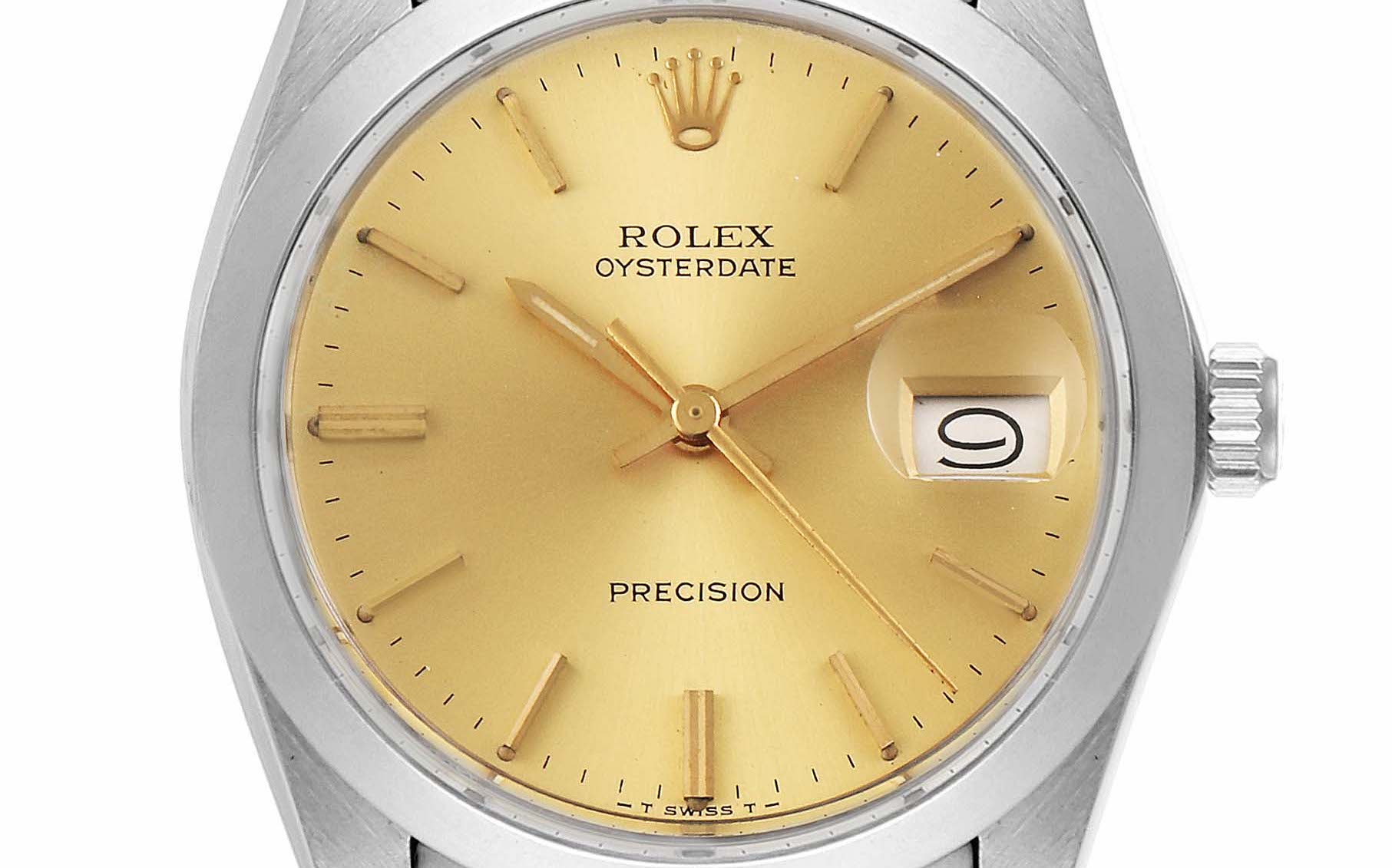
What Does Rolex precision mean? Complete Guide
Rolex has used many different names, designations, and models throughout the years. Some are more well-known than others. But have you heard about the term “Rolex Precision”?
Chances are, you have seen the text “Precision” on the dial of a vintage Rolex watch and wondered what it means. Luckily, that’s exactly what we are going to sort out in this article.
What Does Rolex precision mean?
Rolex Precision is a designation that can be found printed on the dials of certain Rolex watches. Precision is not a name for a model by itself, but instead, it refers to a certain type of watch with a certain purpose.
In short: Rolex Precision means that the movement is not COSC certified.
The two primary watches on which you’ll find the text “Precision” printed on the dials are Oysterdate Precision and Oyster Precision. However, over the years, Rolex also made a few watches that did not use additional model names but instead were merely called “Precision”. In that sense, Rolex Precision can be described as a type of model that existed in several different shapes and forms throughout the years.
So what was the purpose of the Rolex Precision? The purpose of the Rolex Precision models was to make cheaper options that targeted a lower segment. As such, they were intended to be the most affordable options and be more accessible for more people. How was Rolex able to create a more affordable watch? In two ways:
- Rolex Precision watches are exclusively made of stainless steel (with the exception of a few models)
- Rolex Precision watches do not have COSC certification (Applies to all Precision watches)
Rolex is a company that has put a lot of focus and effort into making highly accurate timepieces. And they have also put a lot of effort into testing and certifying their timepieces to actually prove their superb accuracy. Originally, Rolex began by sending its watches to COSC, the Official Swiss Chronometer Testing Institute. This is an independent institution that tests Swiss Chronometers. However, doing so is not free of charge. It also takes time and requires the movement to uphold the utmost precision in order to pass the tests.
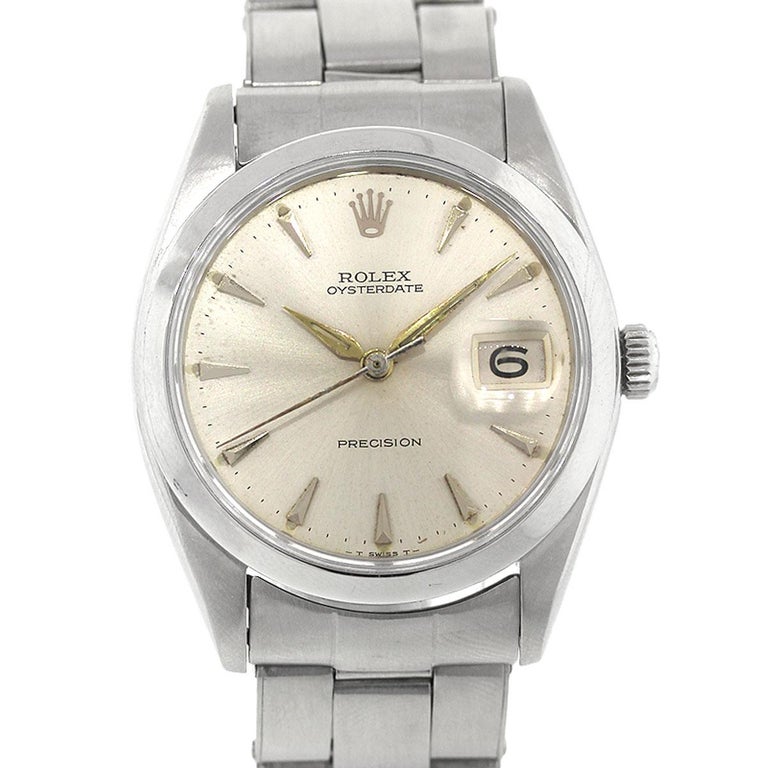
On the watches that have passed the COSC test, you can find the text “Officially certified Chronometer” and later “Superlative chronometer officially certified”. However, since the Precision watches are not officially certified chronometers, they cannot have this text. Instead, they simply have the text “Precision”.
There is a misconception about the Rolex Precision watches in terms of their accuracy. Some people believe that they are not as accurate as certified watches. Some people believe that the watches had poor accuracy, hence why they weren’t certified because they wouldn’t pass the COSC test.
But this is not the case. The only difference between the Precision watches and the officially certified watches is that the latter has been tested by COSC, the independent chronometer testing institute.
Rolex Precision watches existed both with manual-wound movements and automatic movements. The hand-wound watches are even more affordable than their automatic counterparts as it is more affordable and easier to make hand-wound movements than automatic ones. The fact of the matter is that many of the Rolex Precisions are what would come to be the last hand-wound Rolex watches. These movements were powered by the 1225 caliber. Some older models used the caliber 1210.
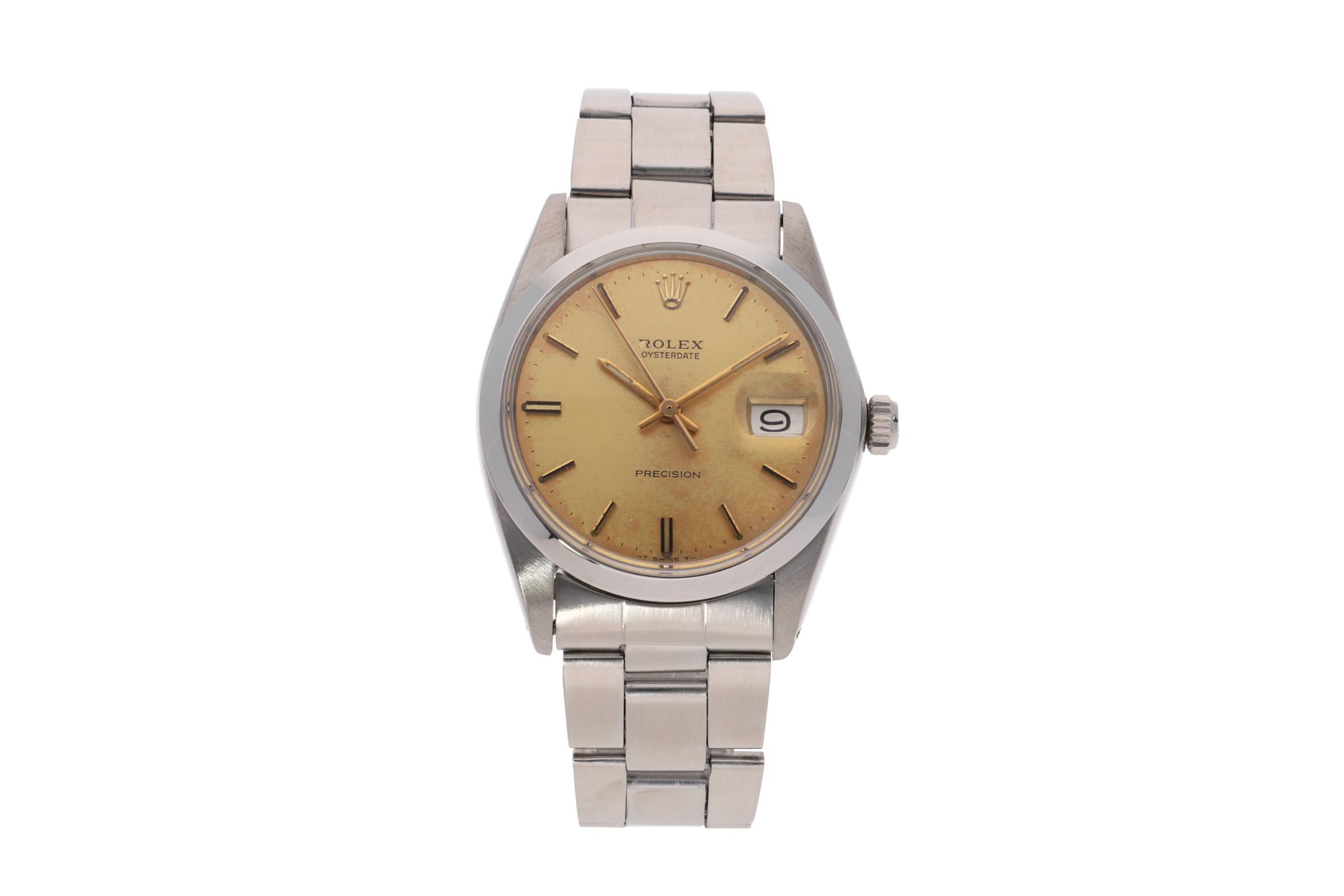
The automatic versions of the Precisions essentially use the same movement only that they are equipped with a rotor. Since there are those both with and without a date function, they will also differ in whether they have a date module or not.
The concept of making them was similar to that of Rolex, but with a Rolex in-house movement instead of ETA. With that said, Precision only means that the movement is non-COSC certified. It doesn’t mean that the movement is hand-wound (as some people mistake it for), nor does it mean that the movement has a poorer accuracy than those that are in fact COSC certified. The Precision designation can be found on several different models. It is most commonly found on the Oyster and the Oyster Date. But as mentioned, it was also used for several other models including the Air-King.
During this time, Rolex also manufactured the “Super Precision”. However, this designation was much less common than the “Precision” designation. It was primarily used for the Air-King and Explorer.

Rolex Oyster and Oysterdate – simplicity, and affordability
The Oyster and OysterDate Precision models were the two primary Precision models that Rolex made with the intention of making them entry-level models. They were the most affordable Rolex watches at the time and thus were meant to reel in a new target audience who couldn’t afford Rolex’s more expensive models. They were the most affordable Rolex watches back then and they still remain some of the most affordable men’s Rolex watches on the secondhand market. This is great news because whilst the prices of any Rolex watches have shot through the roof, the Precision models are considerably affordable and offer great bang for the buck.
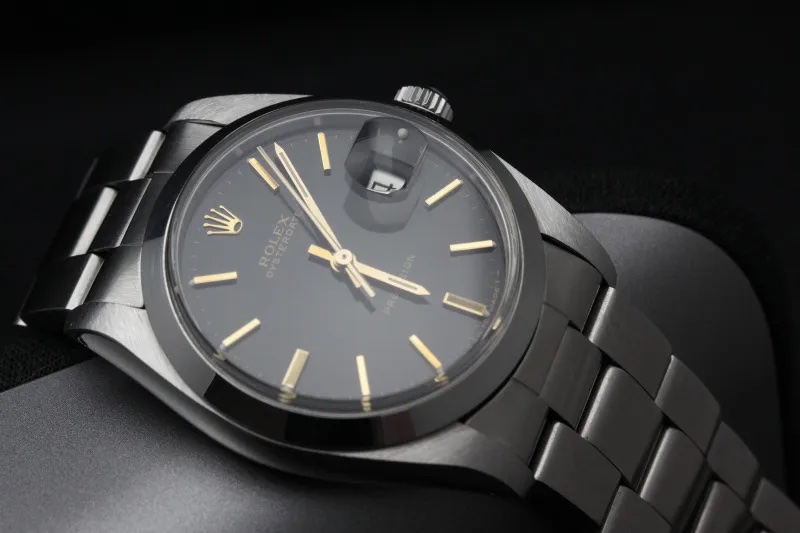
The start of the OysterDate Precision
The first Oysterdate Precision was the reference 6694. It was released in 1960 and was in production up until 1986. This means that it is also Rolex’s last manual-wound watch This model is all about simplicity, functionality, and affordability. As mentioned, it is made in stainless steel but there are a few, more rare models that are made in gold and steel.
Because of its (relatively) affordable price tags, it was one of Rolex’s most popular models. At the same time, it carries all of the iconic Rolex design elements such as the Oyster bracelet and the date function with the cyclops positioned at 3 o’clock.
It’s not the text “Precision” that is worth discussing but rather what it represents. No, the accuracy of this watch wasn’t worse than the certified watches, but to enable a lower price point, Rolex was actually willing to skip the certification tests. Moreover, some people appreciate the clean dial that the Precision designation results in. Unlike the COSC certification printing, the Precision watches only have one line of text, resulting in a cleaner and less cluttered dial.
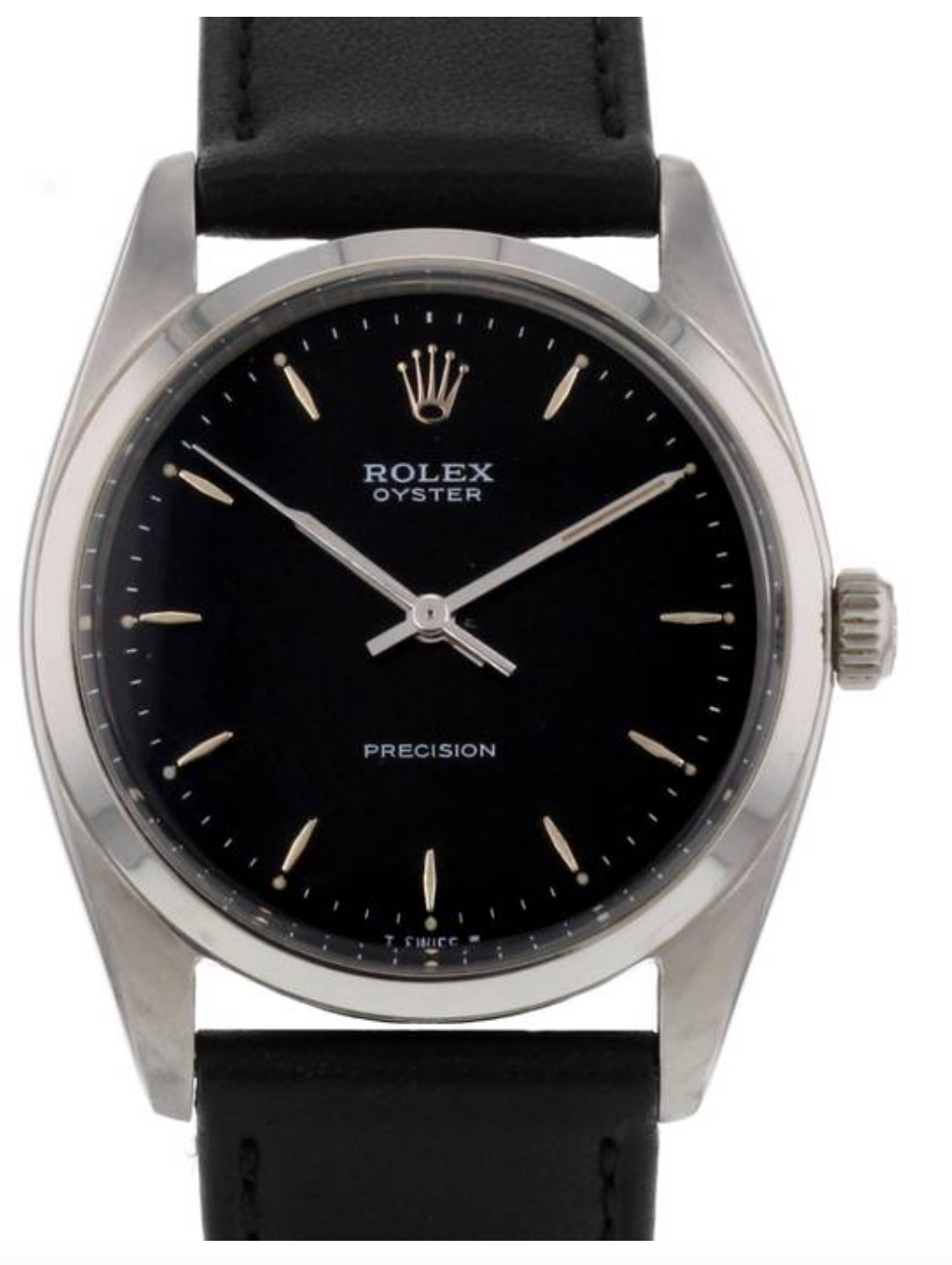
Manual wind caliber of the Precision
The Rolex Precision is associated with manual-wound movements. And that’s because many of them had just that. But as mentioned, the Precision designation is not strictly an indication that the watch has a manual movement because some had automatic movements as well. At the same time, the Oysterdate Precision was only made with a manual movement. This is interesting considering the fact that it was in production for 26 long years. In addition, by the end of the production, simply adding an automatic movement wasn’t a very advanced or complicated thing to do. Rolex had improved their automatic mechanism considerably yet still they insisted that they would not introduce an automatic movement.
But as for the Oysterdate, the fact that it has a manual movement is something that splits opinions. Some people love the idea that it is the last manually-wound Rolex watch. Other people just dislike the concept of manual watches and the fact that you need to wind them by hand.
The 1225 caliber is the movement that is most used in the Oysterdate precision. This is a movement with 17 jewels operating with a frequency of 21600bph. This movement is relatively simple but it has proven to be extremely durable, robust, and long-lasting. In other words, a true workhorse.
The Oysterdate does not have a quick-set date function and by the end of the production, it was rather outdated because of this fact. At the same time, a lot of people find the simplicity and the traditional functionality of this timepiece to be an interesting part of Rolex’s history that contributes to the appeal of the Oysterdate.
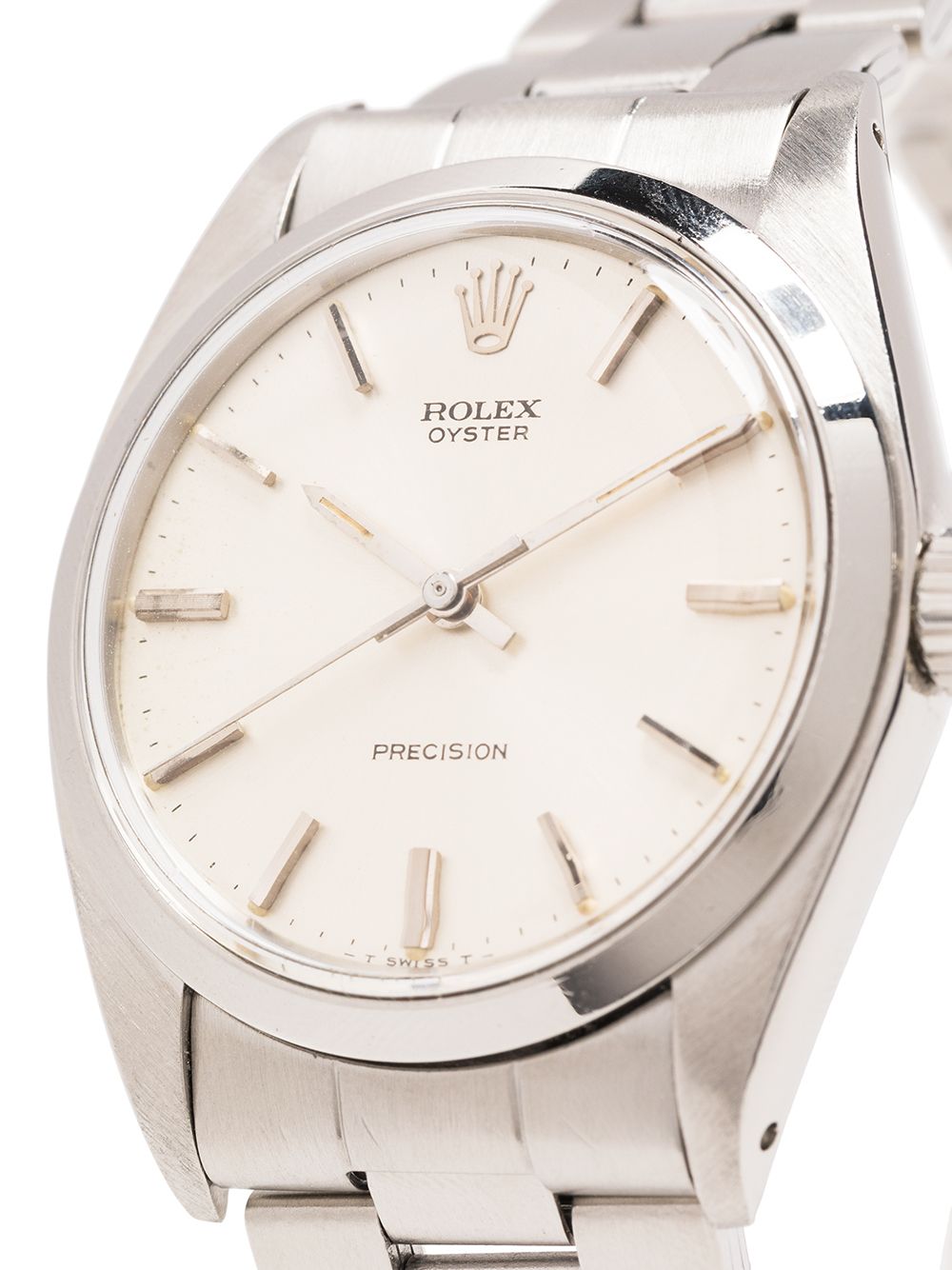
Rolex Precision: Entry-level Rolex
The Precision line was always intended to be an entry-level watch with an affordable price tag. It was made to be simple and affordable and for many, it has represented their first Rolex watch. But in recent times, it has been overlooked by many in favor of other more well-known Rolex models. This includes models such as the Datejust and the Oyster Perpetual. This is great news for anyone who is looking for an affordable timepiece that offers exceptional value for money.
The OysterDate Precision was made available with a number of different dial color options but most of them were simple, classic, and traditional. The most common dial colors were silver, black, and blue, which align perfectly with the classic and simplistic nature of this model.
The silver dial version comes with yellow gold hands and hour markers, and this worked as inspiration for the new Oyster Perpetual series that Rolex released in 2020, featuring the same layout with a silver dial and gold hands and markers.
The Oyster Precision and the Oysterdate Precision watches were presented in 34mm cases. At the time they were launched, it was a common and classic size that appealed to a lot of men. But by the end of the production, the size ideals changed and 36mm eventually turned into the “classic” for many men. Some people found the 34mm size too small.

Whilst 34mm is small for some, they wear quite large and therefore work great for anyone who enjoys wearing 36mm watches. Don’t let the smaller size on paper deter you from buying this model. Today, the Rolex Precision looks great on both men and women.
Whilst the Oysterdate Precision and Oyster Precision in 34mm are the two most common models, it’s important to point out that there were several Precision watches made during this era. For example, Rolex also made the Oysterdate Precision in 31mm for women. Moreover, bearing in mind that this watch has a 26-year-long production, Rolex carried out several different changes and refinements to its design throughout the years.
Rolex Precision references
The earliest Oysterdate Precision references are the 6494, 6294, and 6094. In addition to this, you have Oyster Precision models such as the 6424 and 6226. Therefore, don’t just stare yourself blind at one specific reference. Look at all of the different references and see which speaks to you the most. In general, all of these references are very similar, but there are minor differences between them. And when it comes to vintage watches, the details make the difference.
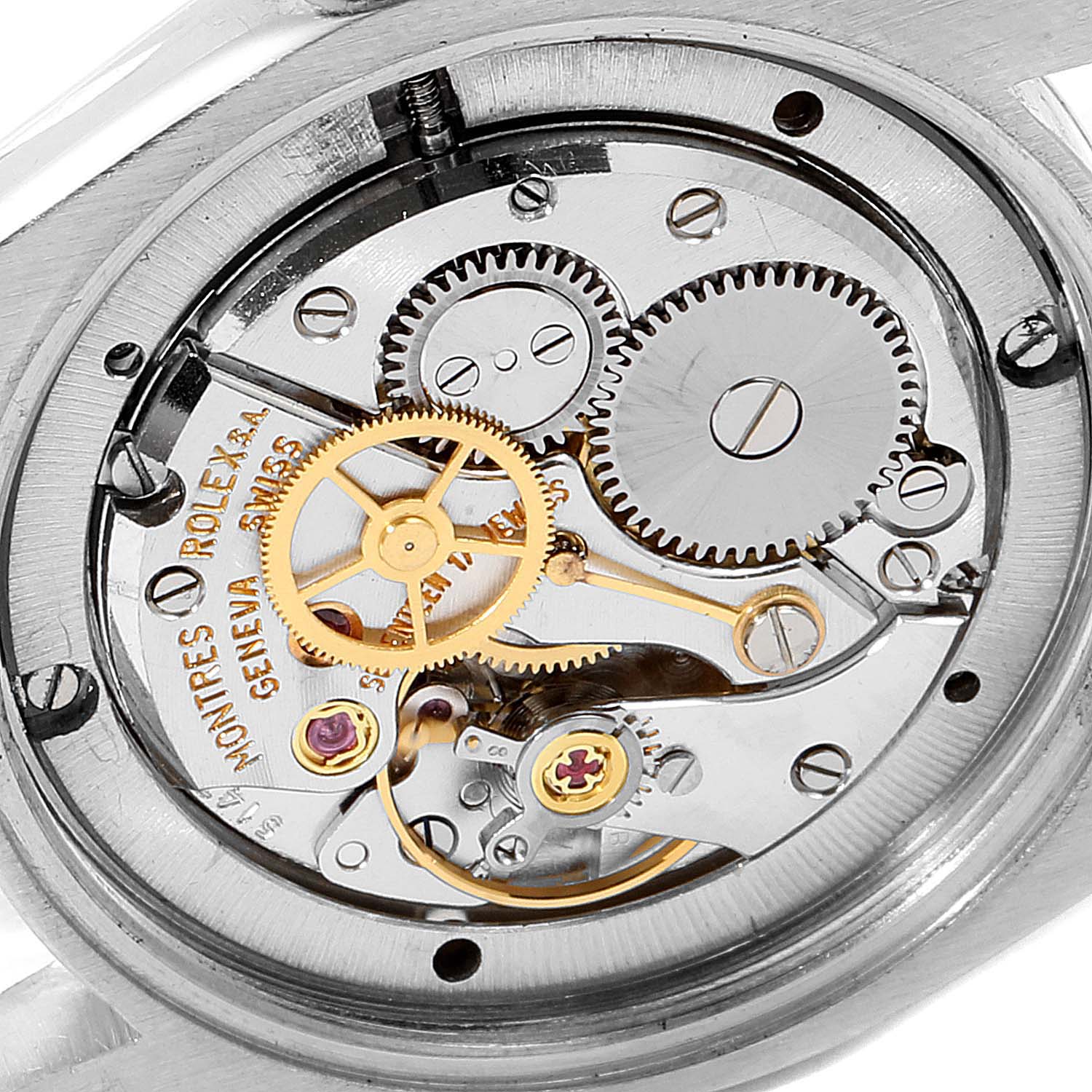
The Rolex Precision offers great value for money
The fact is that the Rolex Precision line offers exceptional value for money. This is why it has become, for many, their first Rolex watch – both when the model was in production – but also now. It remains one of the models in Rolex’s collection that offers the most value for money because it has remained largely forgotten by the watch market.
Whilst it is an entry-level watch, it has everything you expect from a Rolex. A great robust and sturdy movement, an iconic, classic, and timeless design, an Oyster case, and a versatility that works exceptionally well through all of life’s events. Moreover, you get an interesting timepiece with a long and a bit quirky history. It can work as a dressy and elegant timepiece, but it can also work as a functional everyday timepiece. That’s what makes Rolex watches so superbly great.





Excellent article on the manual wind watches. I have several and enjoy them all. It’s a simple pleasure to manually wind a watch. I have a 31mm OysterDate which is fine on my skinny wrist. Also, I understand that this size is popular in Japan because it is discreet. My 31mm watch runs great and keeps excellent time. An advantage to the manual wind watches is that you don’t need to put them on a winder all the time; just give the crown a couple of twists occasionally and it continues to run with out a winder.
Thanks for sharing your thoughts!
The Oysterdate is a beautiful classic in a very popular size! The manual wind watches can be rather convenient indeed.
Kind regards,
Millenary Watches